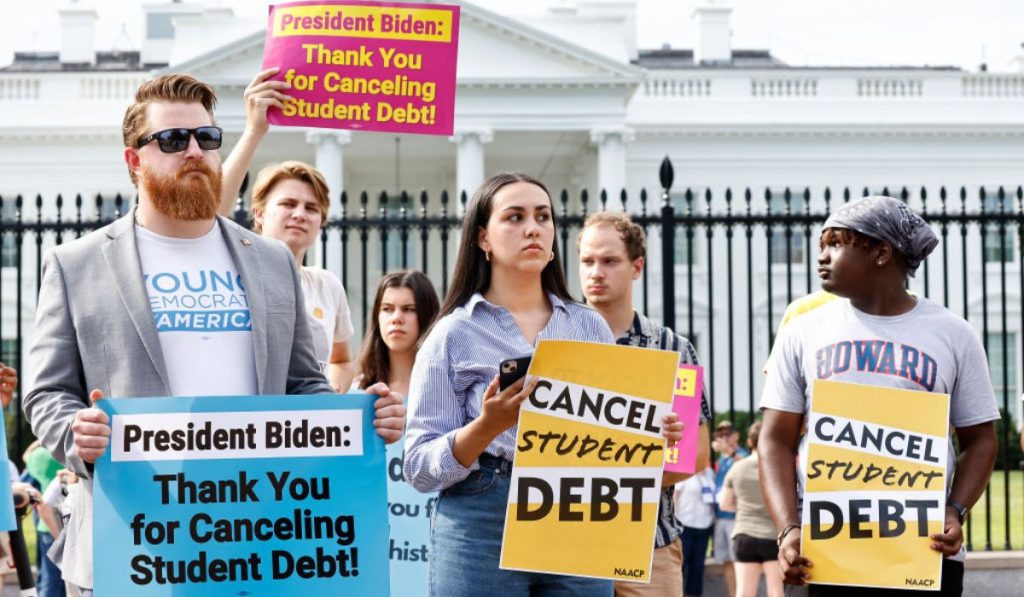The U.S. Supreme Court has upheld a block on President Biden’s new student loan repayment plan, known as the SAVE (Saving on a Valuable Education) plan. This ruling follows challenges by several GOP-led states and adds to the legal difficulties the Biden administration has faced in its efforts to provide relief to millions of borrowers. The Court’s decision leaves the plan’s future uncertain, as the legal battle continues in lower courts, impacting millions of borrowers who were expecting relief.
Introduced as a cornerstone of Biden’s strategy to address the mounting student debt crisis, the SAVE plan aimed to reduce monthly payments and offer a faster route to loan forgiveness for millions of borrowers. The plan was also a key component of Biden’s 2020 presidential campaign, signaling his commitment to alleviating the financial burdens faced by many Americans due to student loans.
The SAVE plan’s design included lowering monthly payments based on income and family size, with some borrowers seeing their payments reduced to as little as zero dollars. Additionally, the plan aimed to simplify the complex array of existing repayment options, making it easier for borrowers to understand and manage their obligations. The Congressional Budget Office estimated that the plan would cost around $276 billion, underscoring its scope and ambition.

The Supreme Court’s decision to leave the block in place has introduced significant uncertainty into the future of the SAVE plan. This ruling is the result of ongoing legal challenges brought by GOP-led states such as Alaska, South Carolina, and Texas. These states argue that the plan would place an undue financial burden on taxpayers and oversteps the executive powers of the President.
Despite the Biden administration’s efforts to have the block lifted, the Supreme Court declined to intervene at this stage. The Court’s brief order suggested that it wants the legal process to continue in the lower courts before it considers stepping in. The case is now before the Eighth Circuit Court of Appeals, which is expected to make a decision soon.
The Supreme Court’s decision has significant implications for the approximately 8 million borrowers currently enrolled in the SAVE plan. In response to the ruling, the Department of Education placed these borrowers in an interest-free forbearance, temporarily relieving them from making monthly payments. However, this is only a temporary measure, and the ultimate fate of the plan remains uncertain.
The White House expressed its disappointment with the Court’s decision but emphasized its commitment to defending the SAVE plan. White House spokesman Angelo Fernández Hernández stated that the administration would “continue to aggressively defend the SAVE Plan” and criticized the efforts of Republican officials to “raise costs on millions of their own constituents’ student loan payments.”
Broader Legal and Political Context
The legal challenges to the SAVE plan are part of a broader political battle over student loan forgiveness, an issue that has deeply divided the country. Progressive advocates argue that widespread student debt cancellation is necessary to address economic inequality and relieve the burden on those struggling with educational loans. Conversely, conservative critics argue that such measures are fiscally irresponsible and unfair to taxpayers who either did not attend college or have already repaid their loans.
This is not the first time the Biden administration has faced legal setbacks in its efforts to implement student loan forgiveness. Last year, the Supreme Court’s conservative majority ruled against a different loan forgiveness program, further complicating the administration’s attempts to deliver on its campaign promises. This latest decision adds another layer of complexity to the administration’s efforts to provide relief to borrowers.
As the legal proceedings continue, the fate of the SAVE plan remains uncertain. The Eighth Circuit Court of Appeals is expected to deliver a ruling in the near future, which could either pave the way for the plan to proceed or further entrench the legal challenges that have stalled its implementation.
In the meantime, the Biden administration may need to explore other avenues to provide relief to borrowers, though its options may be limited by the ongoing legal constraints. The ongoing debate over student loan forgiveness highlights the deep divisions within American society on how to address the student debt crisis, with millions of borrowers anxiously awaiting the outcome of these legal battles.
The Supreme Court’s decision represents another significant hurdle in the long and uncertain journey toward financial relief for millions of Americans burdened by student debt. As the legal fight continues, the future of the SAVE plan remains in limbo, leaving borrowers in a state of uncertainty as they await the next steps in this complex legal and political saga.
Also Read Russian Air Defense Systems Struggle Amid Ukraine’s Expanding Assaults

